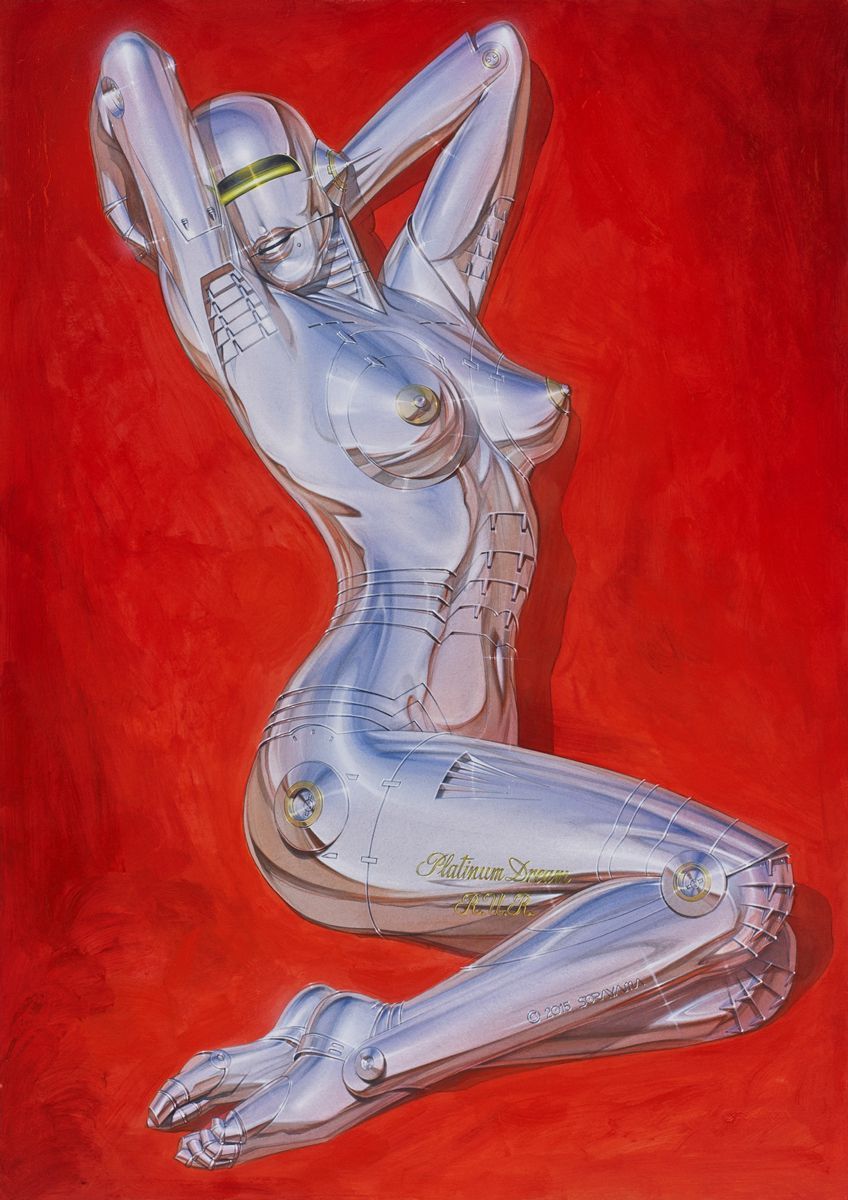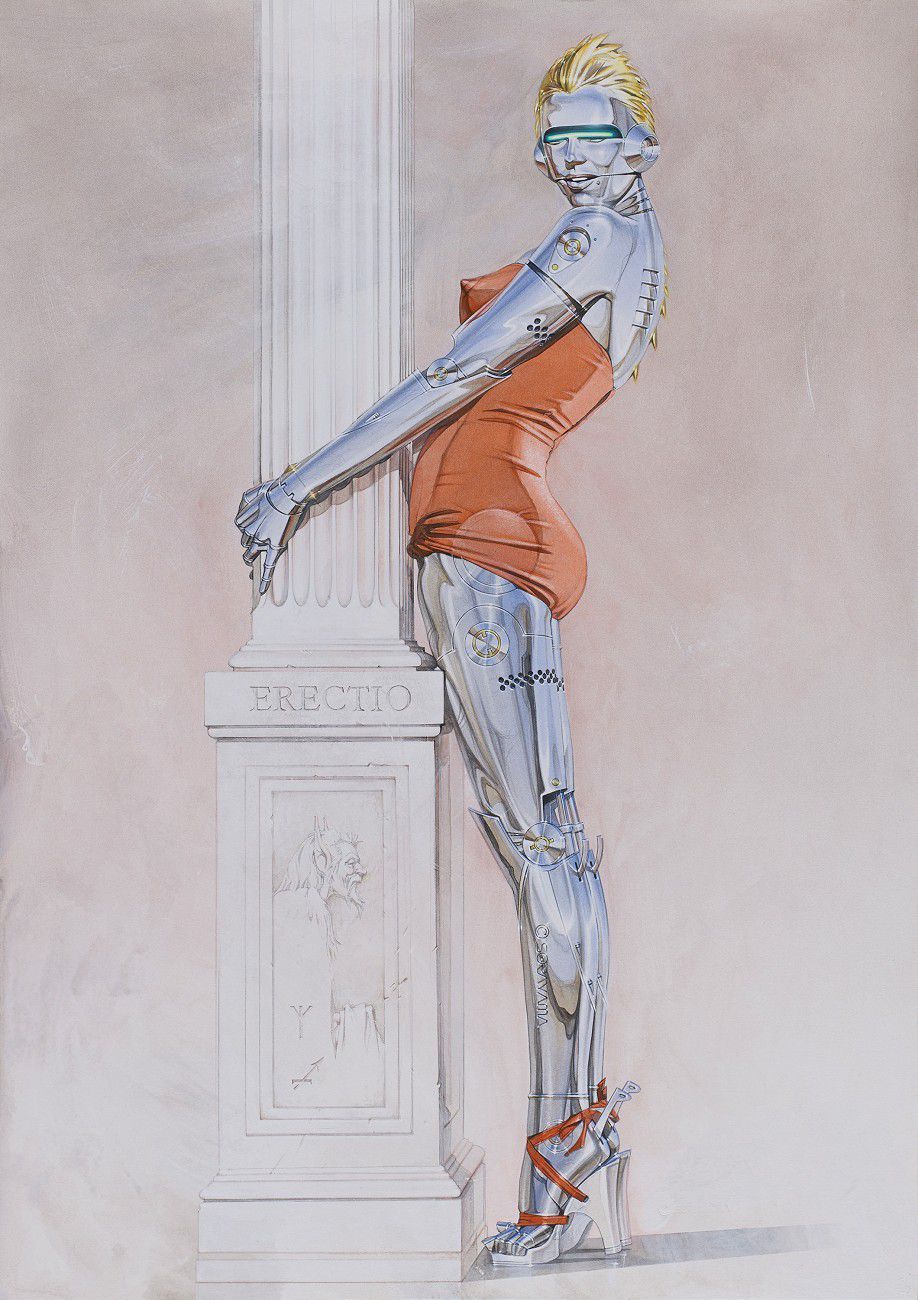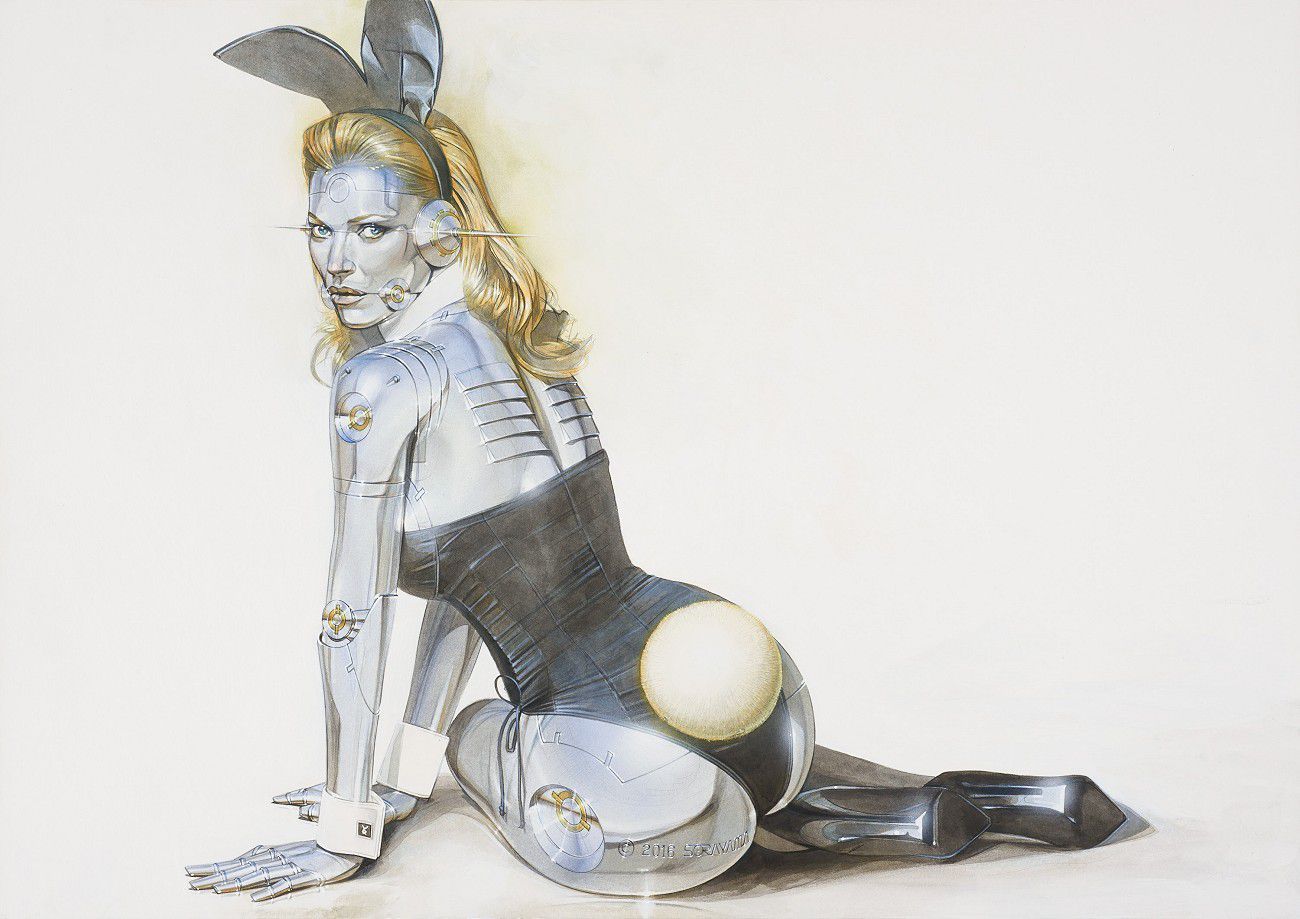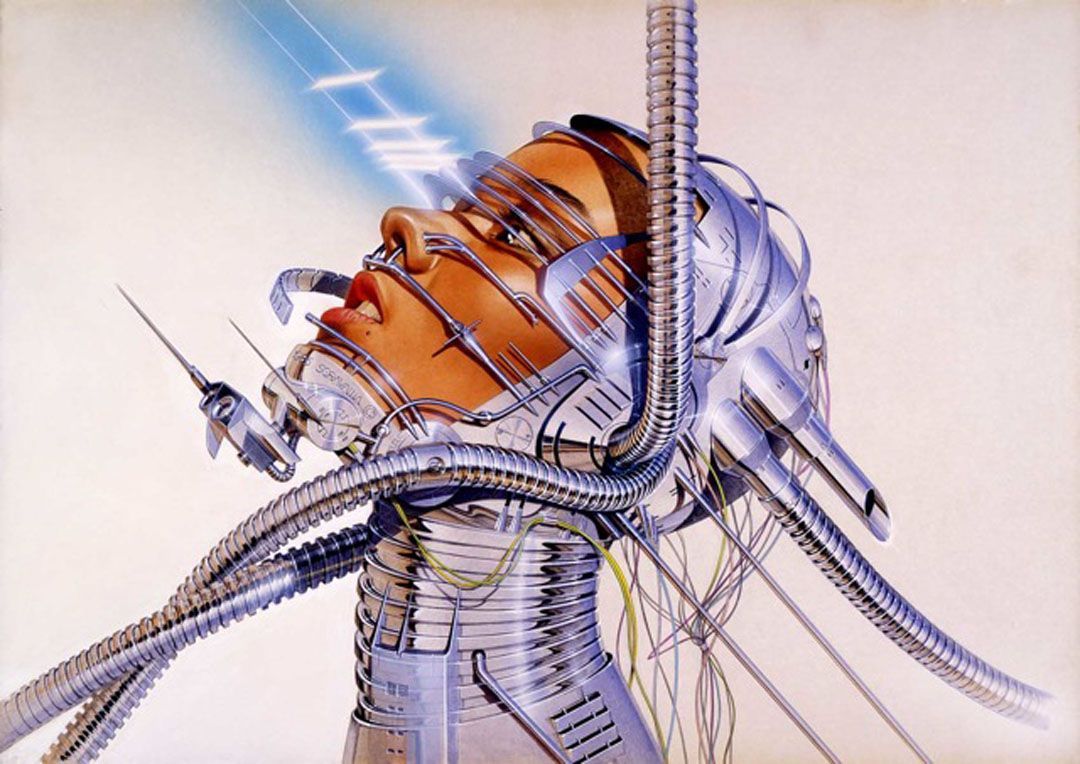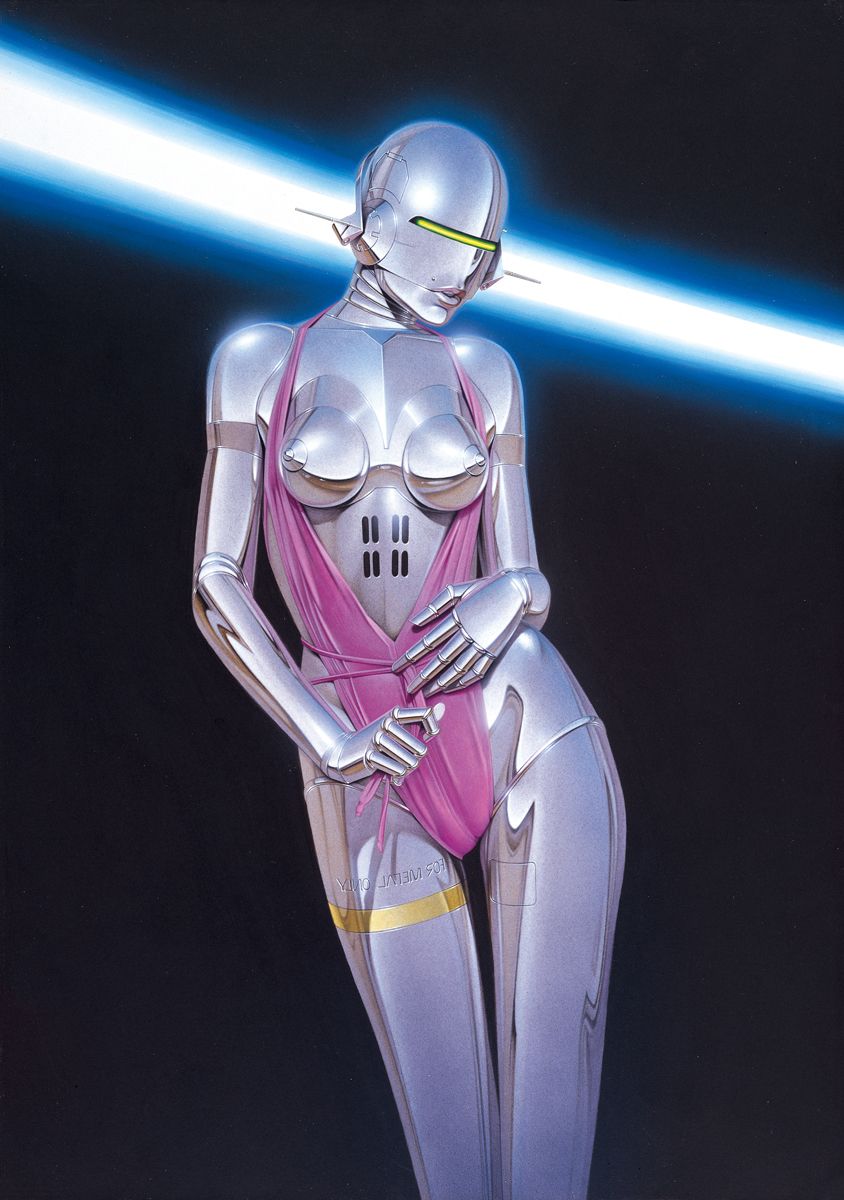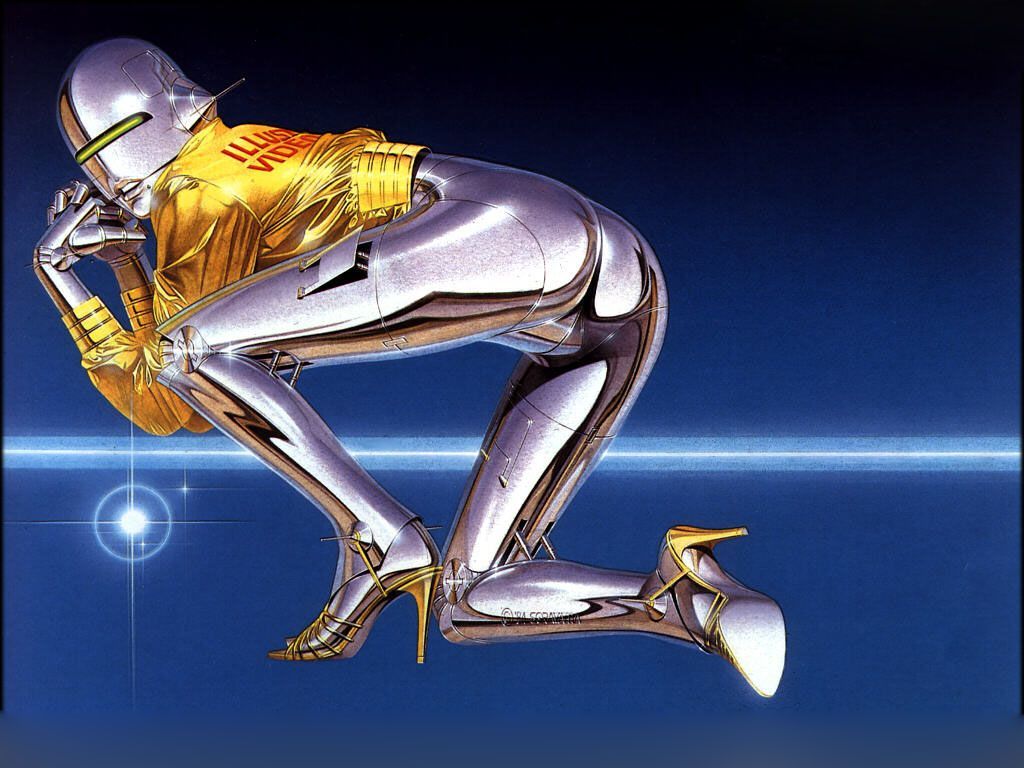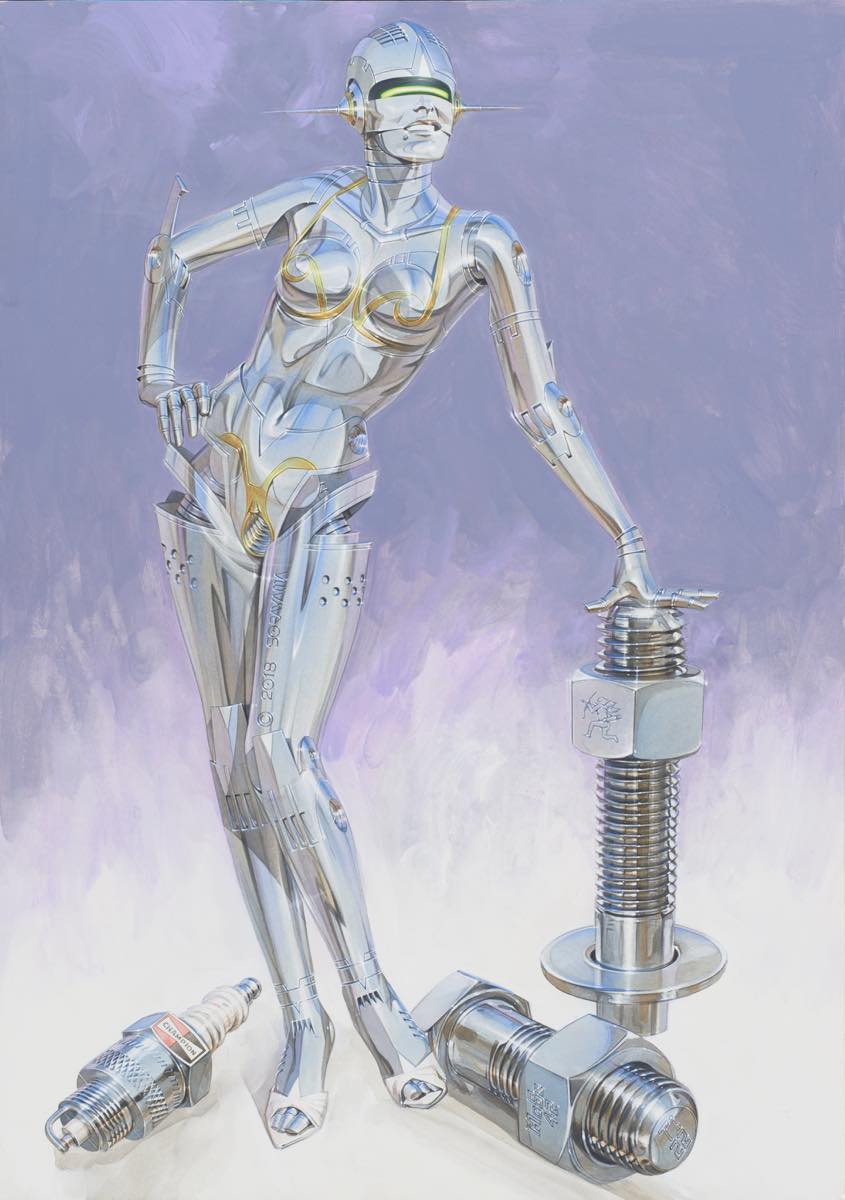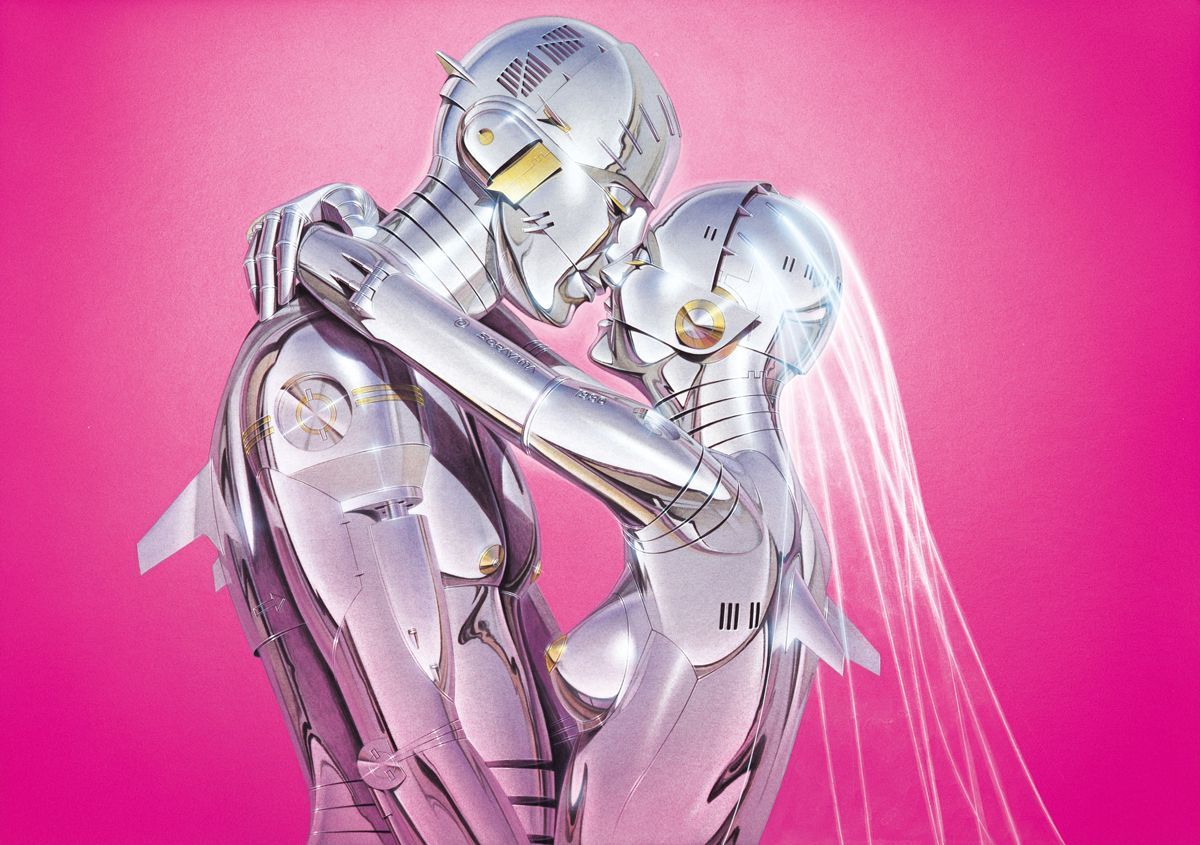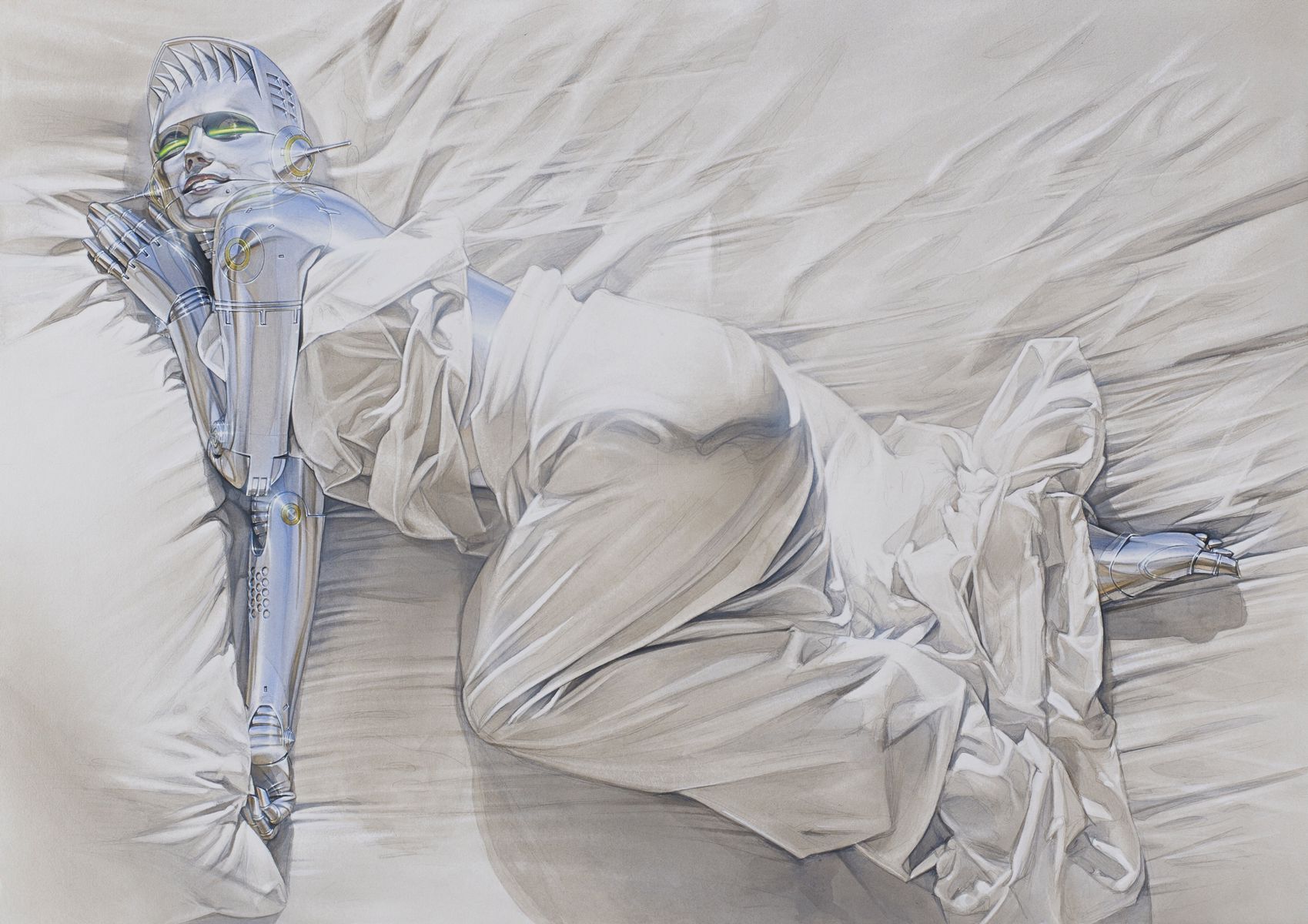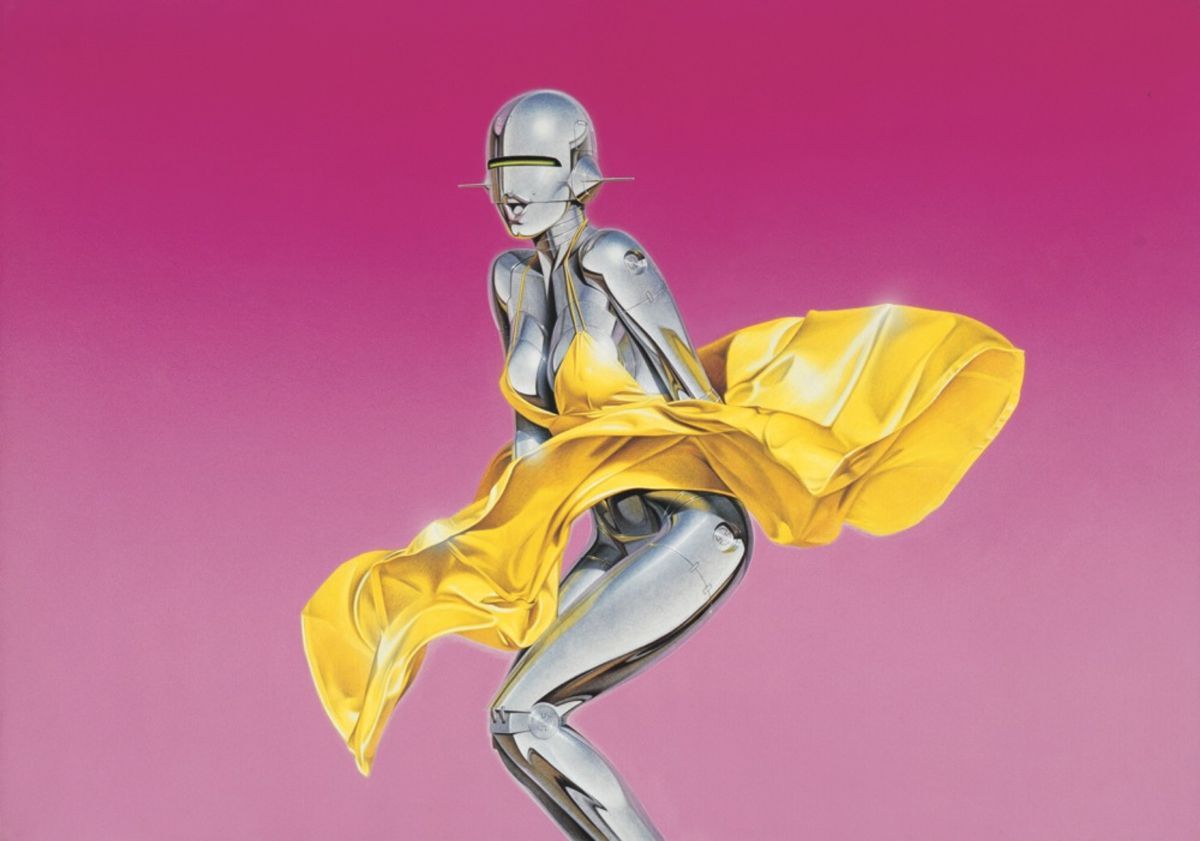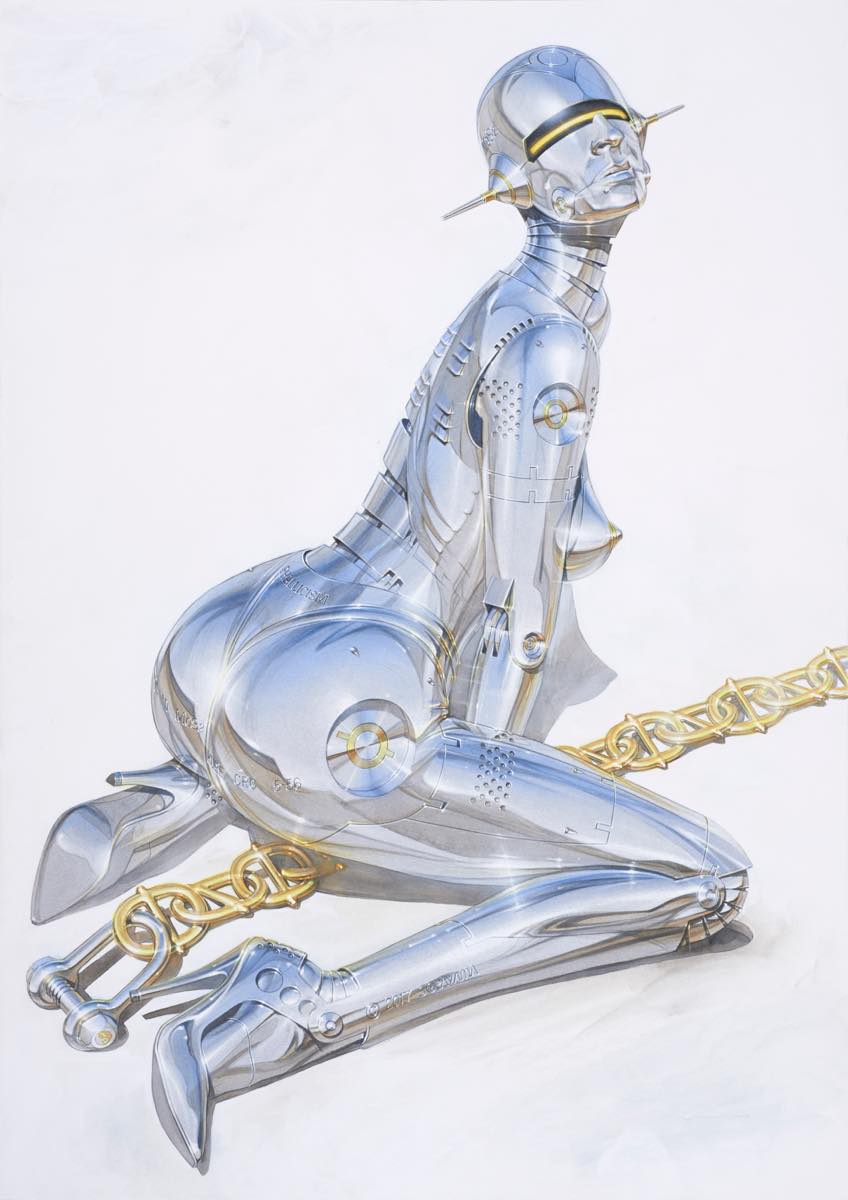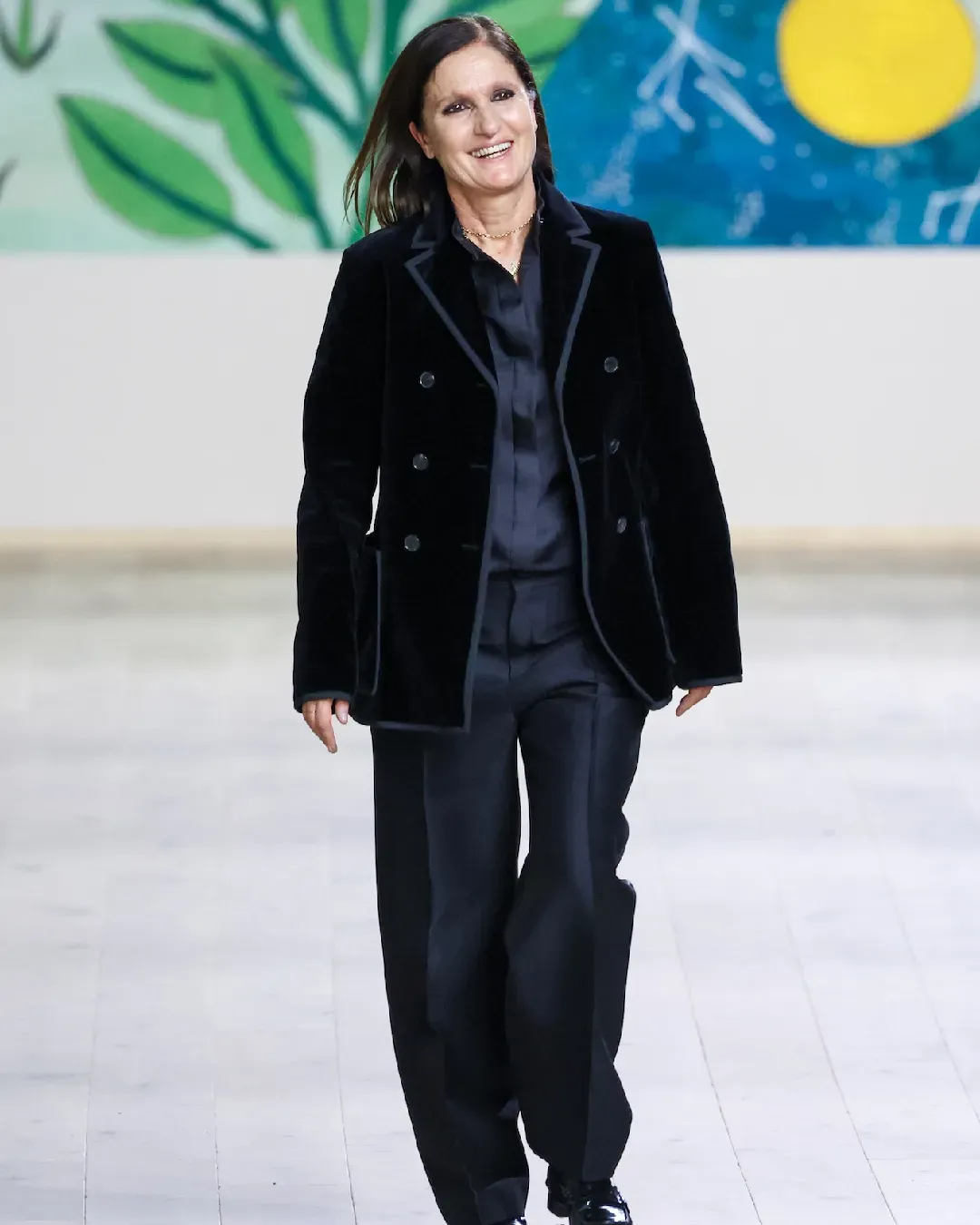
A Visual Focus On Hajime Sorayama's Cyber Erotic Art The man behind the Dior Pre-Fall '19 show statue
At the Men’s Dior show in Tokyo, where Kim Jones presented his pre-fall collection this past November, not only did the incredible collection steal the show, but the catwalk literally centered around an enormous female cybernetic robot statue created by visionary illustrator Hajime Sorayama. An artist that has made the focus of his work the seemingly contrasting worlds of the robotic and the erotic, creating what he defines as a "poetic truth" in his work. With a career that started in the late ’70s, his influences on Sci-Fi aesthetics continues to resonate until this day. Born in Imabari, Ehime Prefecture, Japan in 1947, like many born in Japan at a time heavily shaped by the dropping of the two Hydrogen bombs on Japanese soil. A generation grew up in the aftermath of ultimate dystopian destruction and why futurism became for many an escape and the only way to move forward. A strong influence on the budding stages of Japan’s future focus which would later produce such incredible genre-defining works as Katsuhiro Otomo’s Akira and Masamune Shirow’s Ghost in the Shell.
Sorayama whilst going to high school in the mid and late ’60s became inspired by the pin-up culture that was coming across the Pacific Ocean from America via magazines such as Playboy and started his journey into erotic art. Towards the late ’70s, for an advertising campaign, a brief requested something in a similar vein to the Star Wars Robots C-3PO, without the accompanied copyright issues and his first robot illustration was born. In the decade that followed his interests collided and in 1983 he published the art book ‘Sexy Robot’ which made his sensually organic robotic forms famous around the world.
Describing his style as one of ‘superrealism’, the poses of his sexy fembots mimicked the western beauty ideals beamed from Hollywood through stars such as Marilyn Monroe who became a reoccurring theme in his work. This striking contrast between the warm flesh born sensuality of the human and the cold lifeless metal of the robotic became a reflection of the Japanese interest with provocative erotic art and the forward-thinking focus on computer technology. His art became a cyber-erotic backdrop for many who grew up in the western blossoming manga and anime interested generation of the ’90s and why Kim Jones felt it a very fitting homage to his Dior show taking place in Tokyo. Sorayama represents a timeless futurism as themes of sensuality are so innately human that they will never grow old and humanities curiosity for what possibilities lie beyond our own flesh will always continue to intrigue us.












































